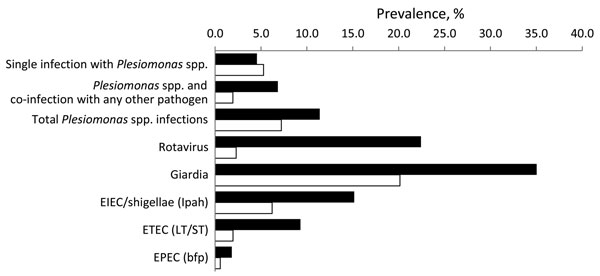Volume 18, Number 2—February 2012
Dispatch
Plesiomonas shigelloides Infection, Ecuador, 2004–2008
Figure

Figure. Case prevalence (black) and weighted community prevalence (white) of enteric pathogens, Ecuador, 2004–2008. Identification of pathogenic Escherichia coli was based on the genes given in parentheses. EIEC, enteroinvasive E. coli; Ipah, invasion plasmid antigen gene; ETEC, enterotoxigenic E. coli; LT, heat-labile toxin; ST, heat-stable toxin; EPEC, enteropathogenic E. coli; bfp, bundle-forming pili.
Page created: January 18, 2012
Page updated: January 18, 2012
Page reviewed: January 18, 2012
The conclusions, findings, and opinions expressed by authors contributing to this journal do not necessarily reflect the official position of the U.S. Department of Health and Human Services, the Public Health Service, the Centers for Disease Control and Prevention, or the authors' affiliated institutions. Use of trade names is for identification only and does not imply endorsement by any of the groups named above.